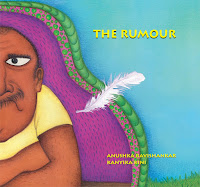Paying Homage to Dr. A.P.J. Abdul Kalam
Holding and reading wordless picture books can be the first positive step towards learning reading skills. Readers are not intimidated by words and they gain confidence by the knowledge that they are able to comprehend the contents of a book on their own.
Picture books often require young readers to ask the basic question: What will happen next? But it doesn’t stop there. The books also invite readers to look backwards. This ability to travel back and forth in a book facilitates the development of reading skills. Picture books are full of details. Absorbing these details while looking at the pictures helps children enjoy the nuances of language as they become more fluent readers.
The special thing about picture books is the magical way they connect generations. They present a perfect opportunity for adult-child interaction. There is a universality about picture books that crosses all linguistic and cultural barriers unlike written texts, especially at the early learning stages.
Check out picture books from Karadi Tales!
Related posts






I think the picture book is a magical form. Where else can pictures and words work together seamlessly to create a story in which the young child is also a participant as he turns the page or as she asks a question?
Oops, posted too soon. I meant to say–in wordless books, the adult and child together provide the words. Here's an article that says reading to young children isn't enough, one must also talk to them. http://tinyurl.com/yk98j2s
Sounds so obvious and simple, but it makes sense.
Thanks for dropping by, Uma, and for pointing us to an interesting resource. We often wonder if wordless books would do well for the Indian market, though…